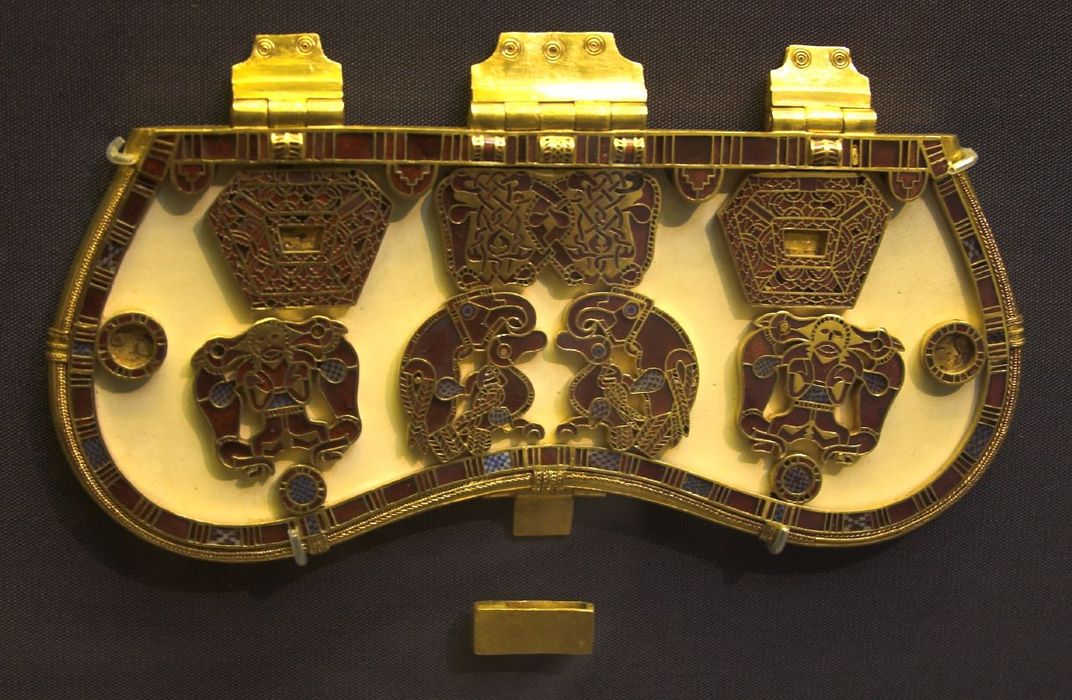This 700-Year-Old Purse From Iraq Is Remarkably Intact
Handbags have been popular for millennia, but usually we don’t find them all in one piece.
:focal(951x541:952x542)/https://tf-cmsv2-smithsonianmag-media.s3.amazonaws.com/filer/b1/0e/b10ea3fb-96da-4003-b497-d8f884dfbc94/1a_courtauld_court_and_craft_-_islamic_bag.jpeg)
A handbag of brass, inlaid with gold and silver has been identified as one of the earliest surviving examples of a woman’s purse, the BBC reports. The elaborate handbag was made in Mosul, Iraq, around 1,300 A.D.
Older evidence of purses exists—like parts of a 4,200-year-old purse, found in Germany. That purse, however, didn't endure the ravages of time. All researchers found were the remnants of dog teeth (a decoration) in the pattern of what they thought could be a purse. It's still a fascinating discovery, but not exactly capable of carrying anything today.
Purses have existed for a long time—what better way to carry a bunch of objects than to wrap them in an animal hide and sling the whole thing over your shoulder or attach it to a belt? This way, your hands are free to find food or build a fire.
But purses and other materials like fabric and leather are rare in the archaeological record—not because they weren’t popular, but because leather and cloth tend to degrade much more quickly than metal, stone, or other materials. Preserving purses after excavation can be tricky, too. It’s much more common to find bits and pieces of purses than the entire thing, as with the Sutton Hoo purse cover, a 1,200-year-old purse cover on display at the British Museum.

The handbag from Mosul is on display at the Courtauld Gallery in London until May 18, 2014.